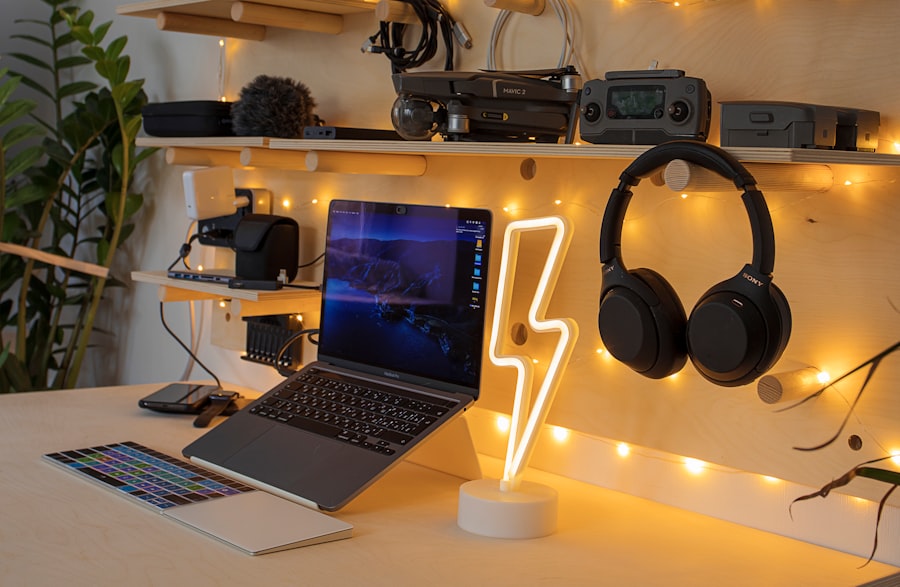A cover letter is an essential component of a job application, serving as an introduction to potential employers and highlighting the applicant’s suitability for the position. It offers an opportunity to showcase personality, passion, and relevant skills in a more personalized manner than a resume alone. The primary purpose of a cover letter is to capture the hiring manager’s attention, demonstrate genuine interest in the company and position, and persuade them to consider the applicant for an interview.
It complements the resume by providing additional context and insight into qualifications and career goals. A well-written cover letter can distinguish an applicant from others and create a lasting impression on the employer. Cover letters also allow applicants to address potential gaps or discrepancies in their resumes, such as career changes or employment gaps, and provide explanations or additional information that may not be evident from the resume alone.
They provide an opportunity to express enthusiasm for the company and the specific role, and to convey how unique skills and experiences make the applicant a suitable fit for the position. The ultimate goal of a cover letter is to persuade the employer to extend an invitation for an interview, where the applicant can further demonstrate their qualifications and suitability for the job.
Key Takeaways
- A cover letter should clearly convey the purpose of applying for a specific position and company.
- Researching the company and position is crucial to tailor the cover letter effectively.
- A strong opening statement should grab the reader’s attention and express enthusiasm for the position.
- Highlighting relevant experience and skills that match the job requirements is essential.
- Tailoring the cover letter to the job description shows a genuine interest in the position.
- Showcasing personality and passion can set the cover letter apart and make a memorable impression.
- Proofreading and editing are necessary to ensure a professional and polished final cover letter.
Researching the Company and Position
Researching the Company
Start by visiting the company’s website, reading about its mission, vision, and values, and familiarizing yourself with its products or services. Look for recent news articles, press releases, or social media posts to gain insight into the company’s current projects, initiatives, and achievements.
Understanding the Job Requirements
Research the specific job opening by carefully reading the job description and requirements. Identify the key skills, experiences, and qualifications that the employer is seeking, and make note of any specific responsibilities or challenges mentioned in the job posting.
Tailoring Your Cover Letter
This information will help you tailor your cover letter to address the company’s needs and demonstrate how your background and expertise align with the requirements of the position. By conducting thorough research, you can show the employer that you are genuinely interested in the company and position, and that you have taken the time to understand their unique needs and priorities.
Crafting a Strong Opening Statement

The opening statement of your cover letter is your chance to make a strong first impression and capture the attention of the hiring manager. It should be engaging, concise, and tailored to the specific company and position you are applying for. Consider starting with a compelling introduction that immediately grabs the reader’s attention and conveys your enthusiasm for the opportunity.
You may want to mention something specific about the company that resonates with you, such as its mission, values, or recent achievements, to demonstrate your genuine interest in the organization. In addition to expressing your enthusiasm, your opening statement should clearly state the position you are applying for and briefly highlight why you are well-suited for the role. You can mention a specific skill, experience, or accomplishment that is particularly relevant to the job opening, providing a glimpse of what you can bring to the table.
Avoid using generic or cliché opening lines, as they are unlikely to make a memorable impression on the reader. Instead, strive to be authentic and specific in your opening statement, setting the tone for the rest of your cover letter and compelling the employer to continue reading.
Highlighting Relevant Experience and Skills
After capturing the reader’s attention with a strong opening statement, it’s time to delve into the body of your cover letter, where you will highlight your relevant experience and skills. This section should provide specific examples of how your background aligns with the requirements of the job, demonstrating your qualifications and suitability for the position. Use concrete examples from your previous work experience, education, or extracurricular activities to showcase your skills and accomplishments.
When highlighting your experience and skills, focus on those that are most relevant to the job description and requirements. Use keywords and phrases from the job posting to emphasize how your background aligns with what the employer is looking for. Provide specific examples of how you have successfully applied these skills in previous roles, using metrics or results whenever possible to quantify your achievements.
By showcasing your relevant experience and skills in a clear and compelling manner, you can demonstrate to the employer that you have the qualifications and capabilities they are seeking in an ideal candidate. In addition to highlighting your professional experience, consider including any relevant certifications, awards, or professional development activities that further demonstrate your expertise and commitment to continuous learning and growth. This can help bolster your credibility as a candidate and further differentiate you from other applicants.
Tailoring the Cover Letter to the Job Description
One of the most important aspects of crafting an effective cover letter is tailoring it to the specific job description and requirements outlined by the employer. This means customizing each cover letter for every job application rather than using a generic template. By closely aligning your cover letter with the employer’s needs and priorities, you can demonstrate that you have taken the time to understand their unique requirements and show how you are uniquely qualified for the position.
To tailor your cover letter effectively, carefully review the job description and identify the key skills, experiences, and qualifications that are being sought. Then, customize your cover letter by addressing these specific points and providing examples of how your background aligns with what the employer is looking for. Use language from the job posting to mirror their terminology and demonstrate that you are speaking their language.
By doing so, you can make it easier for the hiring manager to see how your qualifications match their needs, increasing your chances of being considered for an interview. In addition to tailoring your cover letter to match the job description, consider addressing any potential concerns or questions that may arise from your resume or application materials. If there are gaps in your employment history or career changes that need explanation, use your cover letter as an opportunity to provide context and reassure the employer about your suitability for the position.
Showcasing Your Personality and Passion

Why Personality Matters
While it’s important to highlight your qualifications and skills in a cover letter, it’s equally essential to showcase your personality and passion for the role and company. Employers not only want to know that you have the right qualifications but also that you are genuinely enthusiastic about the opportunity and will be a good fit for their team and culture.
Sharing Personal Anecdotes and Experiences
Consider incorporating personal anecdotes or experiences that demonstrate your passion for the industry or role. Share stories about how you have gone above and beyond in previous positions or how you have overcome challenges that have shaped your professional journey. By sharing these personal insights, you can create a more memorable and impactful impression on the hiring manager while also providing additional context about who you are beyond your resume.
Conveying Authenticity and Enthusiasm
In addition to showcasing your passion, use language in your cover letter that reflects your enthusiasm for the opportunity. Avoid using overly formal or generic language that may come across as insincere or disengaged. Instead, strive to convey authenticity and excitement about the prospect of joining the company and contributing to its success.
Proofreading and Editing for a Professional Finish
After crafting a compelling cover letter that effectively showcases your qualifications, personality, and passion, it’s crucial to thoroughly proofread and edit it before submitting it with your job application. Typos, grammatical errors, or formatting issues can detract from an otherwise strong cover letter and create a negative impression on the employer. Take the time to review your cover letter carefully for any mistakes or inconsistencies before sending it off.
Consider using spell check tools or grammar checking software to catch any obvious errors, but also read through your cover letter multiple times to ensure that it flows smoothly and effectively communicates your message. Look for opportunities to tighten up sentences or rephrase awkward phrasing for clarity and impact. Additionally, consider asking a trusted friend or mentor to review your cover letter for feedback before finalizing it.
In addition to proofreading for errors, pay attention to formatting and overall presentation. Ensure that your cover letter is well-organized with clear headings and sections, making it easy for the reader to navigate. Use a professional font and standard business formatting for a polished appearance.
By taking these extra steps to proofread and edit your cover letter thoroughly, you can ensure that it presents a professional finish that reflects positively on you as a candidate. A well-crafted cover letter that is free of errors will leave a lasting impression on the employer and increase your chances of being considered for an interview. In conclusion, crafting an effective cover letter requires careful attention to detail, thoughtful customization, and a genuine expression of enthusiasm for the opportunity.
By understanding the purpose of a cover letter as a means to introduce yourself, showcase relevant experience, tailor it to the job description, convey personality and passion, and proofread it thoroughly for a professional finish, you can create a compelling document that sets you apart as an ideal candidate for the position. With these strategies in mind, you can approach each job application with confidence knowing that your cover letter effectively communicates why you are uniquely qualified for the role while leaving a positive impression on potential employers.
If you’re looking to make a smooth transition in your career, it’s important to consider the value of volunteering. According to a recent article on Careers Help, “The Importance of Volunteering for Career Growth,” volunteering can provide valuable experience, skills, and networking opportunities that can help you stand out to potential employers. By taking the time to volunteer, you can demonstrate your commitment to personal and professional growth, which can make a big difference in your job search. Check out the full article here.
FAQs
What is a cover letter?
A cover letter is a document sent along with your resume to provide additional information on your skills and experience. It is typically used to introduce yourself to a potential employer and explain why you are the best candidate for the job.
Why is a cover letter important?
A cover letter allows you to personalize your application and highlight specific achievements and qualifications that are relevant to the job you are applying for. It also gives you the opportunity to demonstrate your communication skills and show your enthusiasm for the position.
What should be included in a cover letter?
A cover letter should include your contact information, the employer’s contact information, a salutation, an introduction that explains why you are writing, a body that highlights your relevant skills and experiences, and a closing paragraph that expresses your interest in the position and thanks the employer for their consideration.
How long should a cover letter be?
A cover letter should be concise and to the point, typically no longer than one page. It should be long enough to effectively convey your qualifications and interest in the position, but not so long that it becomes overwhelming to the reader.
How can I make my cover letter stand out?
To make your cover letter stand out, tailor it to the specific job and company you are applying to, use specific examples to demonstrate your skills and experiences, and show your enthusiasm for the position. Additionally, proofread your cover letter carefully to ensure it is free of errors and typos.



